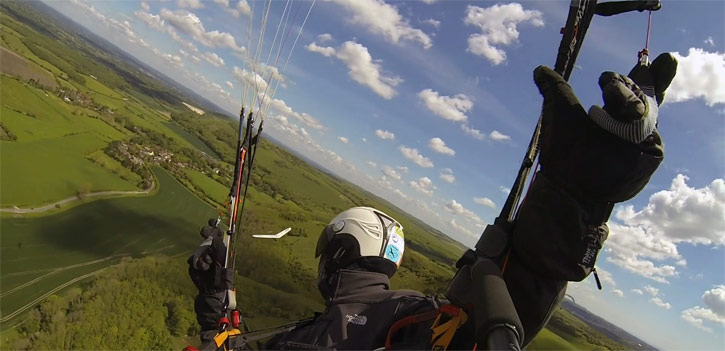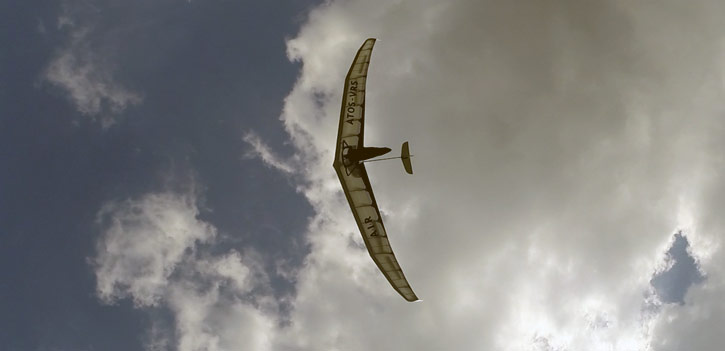There has been much debate recently about the perceived dangers of hang glider and paraglider pilots sharing the air at some sites. This is not a new development; it has been addressed many times and features prominently in BHPA Club Coaching courses, the BHPA Pilot Handbook and in most clubs’ sites guides.

Nevertheless, friction continues to occur, and name-calling frequently erupts when an incident is perceived to have been at least partly caused by the thoughtlessness of one fraternity or another.
Most of this is unconstructive and frequently goes over old ground.
So what are the problems? The most frequently reported one is that of paragliders being popped up to launch directly in front of a top-landing area or hang glider take-off or overshoot. Another common complaint is that of paragliders consistently soaring areas of the ridge in front of a hang glider take-off or overshoot. And a third complaint is that some pilots use landing areas as a chatting area, a sortyour-gear-out space or even as a picnic site. In most cases the application of site rules and good airmanship should resolve these problems; occasionally however it does not.
There are compounding factors: hangies are very much in the minority these days and some paraglider pilots may not have much experience in integrating with them. It’s also true that many hangies have been in the game for a long while; a much higher proportion of paraglider pilots are relatively new to the game. And often folk forget about site rules and good practice when it seems to be the “done thing” at certain sites (not just about co-operation in the air; bending parking rules would be another point of contention).

A few things need to be clearly understood however…
• Hang gliders travel faster than paragliders and take up a lot more room on landing
• Slope landing is difficult and at many sites will be impossible for hang gliders
• The rule for all aircraft is to clear the landing area immediately after landing
• Awareness of all aircraft in the air around you is an essential part of airmanship
• Site rules should always be adhered to - they have often been arrived at from bitter experience
• If the landing field or overshoot is obstructed by anything, don’t land there!
• You should never pack up or derig in the middle of the landing field; always move to the edge
• A little bit of consideration goes a long way.
Many hang glider pilots with motorcycling experience liken paraglider pilots to car drivers. Because of their speed and vulnerability a hangie will always be very aware of his/her surroundings; a car driver/paraglider pilot is usually travelling more slowly and may thus be less aware, particularly of what's going on behind them.
It is often said that the most considerate car drivers are those that once rode (or still ride) motorcycles. It is probably true that many of the more considerate paraglider pilots are those that have flown hang gliders. Yet it is imperative that the occasional bouts of friction do not develop into an us-and-them attitude. Hang glider pilots are at least as capable as paraglider pilots of thoughtlessness, tunnel-vision, poor decisionmaking and poor flying. In most clubs a mature attitude amongst pilots has overcome the “bloody paragliders/bloody hang gliders” attitudes that were common years ago. A sideways glance at the current level of friction between motorists and cyclists tells us that this is not the way to go.
These issues seem to surface at certain sites. This is almost certainly due to the geography of the site, and sometimes its popularity, rather than any deficiency in the club addressing potential conflicts between different types of aircraft. Nevertheless, clubs have a role to play in examining their site rules if these are seen to be ineffective, in ensuring site rules are adhered to when they are being ignored, and - most importantly - in educating all their pilots of the difficulties involved in integrating two different types of aircraft in often-congested conditions.

General rules on avoiding conflict can of course be found in the BHPA Pilot Handbook. But on almost every site there will be some detail of topography, meteorology, certain obstacles, problems of access or simple convenience that means that these general principles will need some local adjustment.
But the bottom line is education. Very few pilots of any type of aircraft will ever deliberately put another at risk, yet all of us at some time or another have been guilty of thoughtlessness and carelessness. Following increasing motorist/cyclist conflict, the eminently sensible “Sorry Mate I Didn’t See You!” (SMIDSY) campaign has led to an increased victim mentality amongst some cyclists.
Let us not draw the same conclusion in our sport!
And if you do feel a pilot has been thoughtless or behaved dangerously, a polite, noncombative approach - or maybe a chat to the club safety officer - will always be more constructive than marching over and being aggressive. Whatever you may feel when the red mist descends, we are all in this together. There should be no us and them, only we. The ways we fly have few differences. And the very few problem pilots are a problem for us all.
Originally published in SKYWINGS magazine (July 2013). Republished with permission of www.skywingsmag.com
